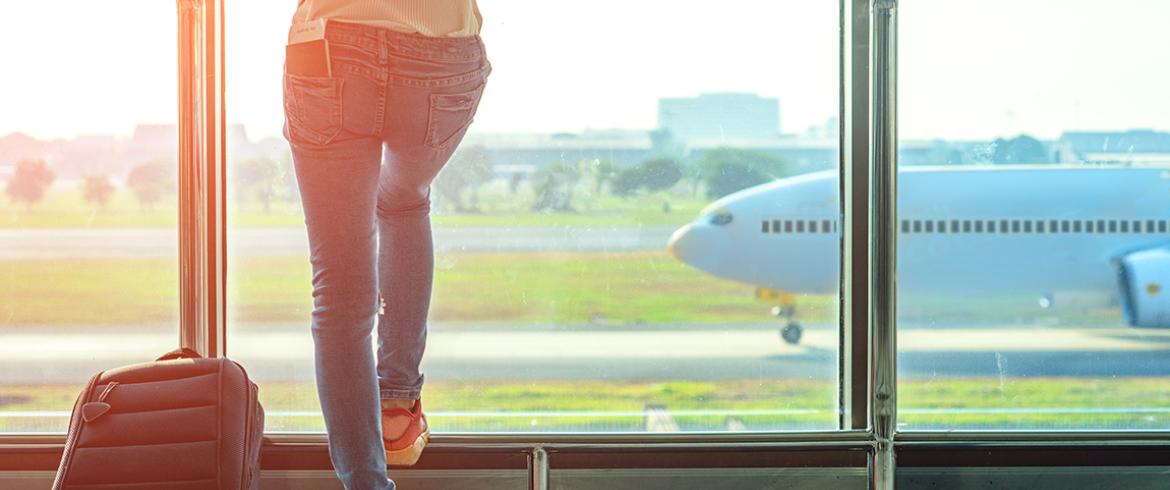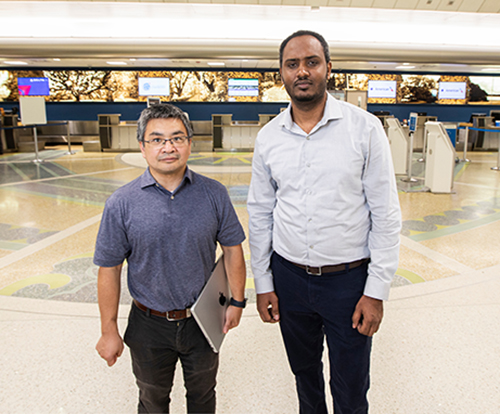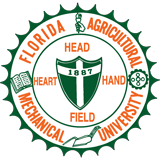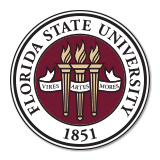
By ID_Anuphon for Adobe Stock
Fewer delays in airline travel? Hybrid algorithms may hold the key.
Researchers at Florida State University and the FAMU-FSU College of Engineering are developing hybrid algorithms to minimize and prevent the impact of travel delays. Their findings could save airlines thousands in revenue and lower consumer costs—and boost customer satisfaction with more on-time flights.
The Problem
Delays and cancellations are one of the main consumer complaints when it comes to air travel. Airlines typically use “estimated time of arrival analysis” to anticipate flight disruptions in advance, but they don’t always get it right. A critical aspect of airline operation management is knowing if the inbound plane may be late.

Traditional estimated time of arrival analysis only focuses on short-term variations within a day. But many operations managers need more time to allocate resources appropriately. That’s where the algorithms come can be game-changing. They provide better estimates correlating to future delays in the weeks and days before travel to give the airlines the time they need to design better outcomes.
“Our research involves a new predictive model to address the challenges specific to the airline industry,” Hui Wang, an associate professor at the FAMU-FSU College of Engineering and one of the study researchers, said. “Our proactive approach paves the way for better resource allocation, improved customer satisfaction and overall operational efficiency.”
How It Works
The researchers used a combination of models for the final algorithm. One model estimates delays and anticipates impacts on downstream flights. Another captures historical trends and the short-term dependency between arrival and departure delays. A third model integrates information from both branches.
“This work involves a type of machine learning that deals with sequential data, like sentences in text,” Wang said. “We trained the algorithm to focus on the most crucial delay patterns and forget the less significant information. It works like an intelligent reader that selectively chooses the information to remember so the reader can follow the storyline.”
The team trained and adjusted the model using data from nine airports in North, Central and South America. The method quantifies the uncertainty of the prediction and presents the operations manager information on the risks of an inbound flight delay in terms of probability. During testing, the final model exceeded expectations and consistently outperformed alternate approaches of traditional analysis.
What It Means
The group is in ongoing conversations with Copa Airlines about the potential implementation of the algorithm and is currently evaluating its practical application. In the future, the team aims to offer the airline industry an accurate delay estimation tool to help them prepare for the impacts of inbound flight delays.
The Research Team
The FAMU-FSU College of Engineering and FSU Department of Scientific Computing partnered with Copa Airlines in the collaborative study. Wang’s engineering group used data analysis and established practical applications for the algorithm to streamline processes and enhance operational procedures. Gordon Eriebacher, a professor with the FSU Scientific Computing group, led a team that leveraged machine learning to simplify the algorithm and improve its performance for the airline.
Tsegai Yhedego is the study’s lead author from the FAMU-FSU College of Engineering. Other co-authors were An-Tsun Wei, from the joint college’s Department of Industrial and Manufacturing Engineering and Miguel Tejada from Copa Airlines.
This research was funded for three years by Copa Airlines through the Copa-FSU Partnership Project. The airline is a hub connecting North America and Latin America to Central America. The work was recently published in the journal Mathematics.
RELATED ARTICLES
NSF-funded “factory-in-a-box” concept could mitigate supply shortage challenges
Researchers Improve 3D Printing Quality with Between-Machine Experience Transfer
Engineering Researchers Discover New Algorithm for Faster Digital Signal Processing

